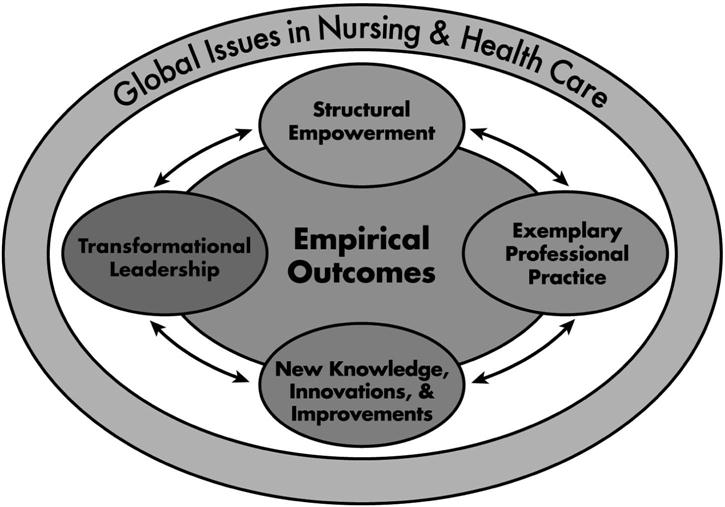The Influence of Magnet Recognition® on Organization and Workplace Policy
Karen Drenkard
“Excellent things are rare.”
—Plato
Uncovering the “Forces of Magnetism”
In the 1980s, a group of insightful nurse researchers used a unique approach to explore a nursing shortage phenomenon in United States hospitals. High RN turnover and vacancy rates were plaguing hospitals and health care organizations. Rather than study what was wrong with these organizations, the researchers chose to identify organizations in which things were going well and learn what was right with them. The American Academy of Nursing’s (AAN) Task Force on Nursing Practice in Hospitals conducted a study of 163 hospitals to identify and describe variables that created environments that attracted and retained well-qualified nurses and promoted quality patient care. Forty-one of the 163 institutions were described as “magnet” hospitals because of their ability to attract and retain professional nurses. The characteristics that seemed to distinguish these “magnet” organizations from others became known as the “forces of magnetism.”
Establishment of the Magnet Program
In 1990, based on a recommendation of the American Nurses Association (ANA), the American Nurses Credentialing Center (ANCC) was established as a separately incorporated nonprofit organization through which the ANA offers credentialing programs and services. The initial proposal for the Magnet Hospital Recognition Program for Excellence in Nursing Services was approved by the ANA Board of Directors in December 1990. The proposal indicated that the program would build upon the 1983 magnet hospital study conducted by the AAN. In 2002, the program name changed to the Magnet Recognition Program®. The program was based on the identified areas of research that were identified as the “forces of magnetism” that led to improved RN and patient outcomes in health care organizations. In 2008, the Commission on Magnet introduced a new vision and a new conceptual model that grouped the 14 forces of magnetism into 5 key components: (1) Transformational Leadership; (2) Structural Empowerment; (3) Exemplary Professional Practice; (4) New Knowledge, Innovations, and Improvements; and (5) Empirical Outcomes. These components are illustrated in Figure 60-1.

In 2010, there were over 370 U.S. hospitals and health care organizations that had achieved Magnet recognition, and 5 international organizations (in Australia, New Zealand, Lebanon, and Singapore). The Magnet Recognition® Program for hospitals influences workplace policy and the work environment for nurses—especially in acute care environments. This is reflected in the low RN turnover of 11.5% and vacancy rate of 3.6% at Magnet hospitals in the U.S. (ANCC, 2010).
This improvement in work environments is evidence-based. Research outcomes are correlating the impact of Magnet status on improved nurse outcomes and patient outcomes as well. Magnet hospitals have a history of positive nurse and work satisfaction linked to increased autonomy in practice, structural empowerment, participation in decision-making opportunities, and a positive work environment (Laschinger, Fingan, Shamian, & Wilk, 2004; Laschinger, Shamian, & Thomson, 2001; Rondeau & Wagar, 2006; Schmalenberg & Kramer, 2008; Smith, Tallman, & Kelley, 2006; Ulrich, Buerhaus, Donelan, Norman, & Dittus, 2007). A positive practice environment is increasingly linked to high quality care (Brooks, Titler, Ardery, & Herr, 2009; Titler et al., 2009; Vaughn et al., 2004). With the release of the 2008 Magnet model (see Figure 60-1) and corresponding manual, there is a requirement for Magnet organizations to have clinical, nurse satisfaction and patient satisfaction scores above the midpoint of the benchmark of the data set provided for review.
The Magnet Application Process
Organizations pursuing Magnet designation work through a multistep process. Magnet designation is conferred for 4 years, and re-designation can be attained. The four phases of the Magnet application process include the following:
Stay updated, free articles. Join our Telegram channel

Full access? Get Clinical Tree


